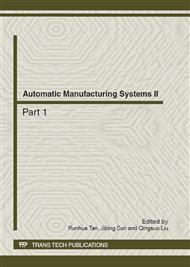p.1343
p.1347
p.1353
p.1357
p.1362
p.1366
p.1371
p.1376
p.1380
DOA Estimation of Surface Vessel under Correlated Noises Using Vector Hydrophone Array
Abstract:
In the traditional acoustic vector data processing, the output of a single vector hydrophone is modeled as a complex vector, which cannot hold the orthogonal structure of the hydrophone. Here, the complex-quaternion model of the vector hydrophone is proposed. The velocity elements are put in the position of the three imaginary parts, which retains the orthogonality of the velocity sensors. As the non-stationary properties of the surface vessel’s radiated signals, the received data are divided into multiple frames. The covariance matrices and their vectorizations of each frame are calculated. An orthogonal projection is employed to eliminate the background noises. Then the noise-free covariance matrix is used to estimate the DOA’s of the sources by taking use of MUSIC algorithm. The simulations verify the good performance of the proposed algorithm.
Info:
Periodical:
Pages:
1362-1365
Citation:
Online since:
June 2012
Authors:
Price:
Сopyright:
© 2012 Trans Tech Publications Ltd. All Rights Reserved
Share:
Citation:


